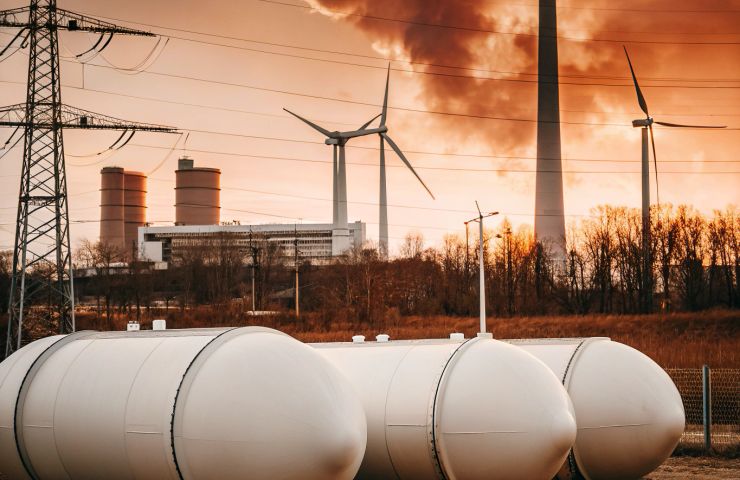
Ontario Expands Hydrogen Production Push with $30M Innovation Fund
November 2, 2025Ontario government has doubled down on its push into hydrogen production, upgrading the Hydrogen Innovation Fund from C$15 million in 2023 to C$30 million now. Run by the Independent Electricity System Operator (IESO), this fresh round will bankroll projects across the province—think grid integration, transportation, heavy industry decarbonization, and low-carbon hydrogen production. Stakeholder sessions kick off in October, paving the way for the official call for proposals in November 2025.
Key takeaways
- They’ve pumped the fund from C$15 M to C$30 M—talk about a boost.
- Covers everything: grid balancing alongside hydrogen storage, transport fuel cells, and industrial decarbonization trials.
- Zeroes in on electrolysis-based hydrogen production, beefing up hydrogen infrastructure, and real-world fuel cell demos.
- Jives with Ontario’s Low-Carbon Hydrogen Strategy and its broader clean energy roadmap.
- NRCan predicts hydrogen could meet 18–30 % of Canada’s energy demand by 2050—creating up to 135,000 jobs across the country, about 100,000 right here in Ontario.
Diving into the tech
This round is all about low-carbon pathways and next-gen gadgets:
- Electrolysis: Zap water with renewable juice or nuclear power and you get clean hydrogen. Ontario’s nuclear fleet can back multi-megawatt electrolyzer setups.
- Energy storage: Turn surplus wind and solar during off-peak hours into hydrogen, then fire it up in peaker plants or flip it back into electricity when the grid’s thirsty.
- Industrial uses: Swap out fossil fuels in steel mills or keep heavy-duty transit rolling with hydrogen fuel cells, slashing process emissions.
- Electrolyzer innovation: Pilot projects are testing alkaline versus PEM stacks, chasing efficiencies north of 75 % while cutting back on pricey platinum-group metals.
Why it matters
Why’s all this so important? Ontario’s already got hydroelectric and nuclear in its corner, so it’s perfectly positioned to lead the way in sustainable energy:
- It’s set to create a slew of jobs—think engineers, construction crews, and operations teams in spots like Hamilton and Sarnia.
- It’ll turbocharge industrial decarbonization in sectors where electrification alone won’t cut it, helping the province inch closer to net-zero.
- And it cements Ontario as a hotspot for hydrogen infrastructure, pulling in private capital and fresh talent.
Put simply, while others are still drawing up blueprints, Ontario’s already building the complete hydrogen ecosystem—from production to end use.
Balancing risks and rewards
Now, it’s not all smooth sailing. Scaling up electrolyzers to multi-megawatt levels brings its share of teething troubles—technical hitches, budget overruns, permitting bottlenecks, grid-connection delays, and iffy offtake agreements. But by smartly de-risking pilot projects and forging cross-sector alliances, Ontario’s aiming to iron out the wrinkles before going full throttle.
Money and policy
The C$30 million sits with the Ministry of Energy, while the IESO handles the heavy lifting by:
- Simplifying the application process and keeping evaluation criteria transparent.
- Designing grants that cover early-stage costs, drawing in private investors.
- Coordinating across ministries to fast-track permits and align regulations.
Historical context and momentum
Flashback to 2023: the original HIF backed 15 pilot projects, from compact electrolyzer demos to full-scale industrial trials. Those insights—on cost curves, scaling challenges, and grid integration—are the secret sauce informing this bigger round. Plus, Natural Resources Canada is forecasting hydrogen could snag up to 30 % of Canada’s energy mix by 2050, and Ontario wants in.
What’s next
As the IESO reviews proposals, keep your eyes peeled for:
- Integrated hydrogen hubs—electrolyzers, storage tanks, and industrial users all in one place.
- Grid-services agreements with the IESO, paying plants to soak up excess power.
- Clean ammonia pilots aimed at fertilizer and export markets, kicking off hydrogen export chains.
- Municipal fleet rollouts, with electrolyzers parked right at bus depots and transit yards.
- Breakthroughs in fuel cell tech for heavy-duty trucks, rail, and port equipment.
Meanwhile, regulators will need to tweak codes on blending, storage, and cross-border shipping—laying the groundwork for Ontario to emerge as a hydrogen export gateway.
Global context
Across the pond, Europe’s scrambling for hydrogen imports to hit its climate targets. Ontario’s HIF could spur clean ammonia plants, tapping into its chemical sector and Great Lakes ports to send zero-emission compounds overseas—scoring a first-mover edge on Atlantic routes.
Bottom line
Bottom line: Ontario’s C$30 M Hydrogen Innovation Fund isn’t just another grant—it’s a clear bet on hydrogen’s role in tomorrow’s energy mix. By doubling down on hydrogen production, grid flexibility, and industrial decarbonization, the province is crafting a blueprint that others will likely follow. If you’re in electrolyzer design, hydrogen fuel cells, or industrial process engineering, now’s the time to jump in.


 With over 15 years of reporting hydrogen news, we are your premier source for the latest updates and insights in hydrogen and renewable energy.
With over 15 years of reporting hydrogen news, we are your premier source for the latest updates and insights in hydrogen and renewable energy.